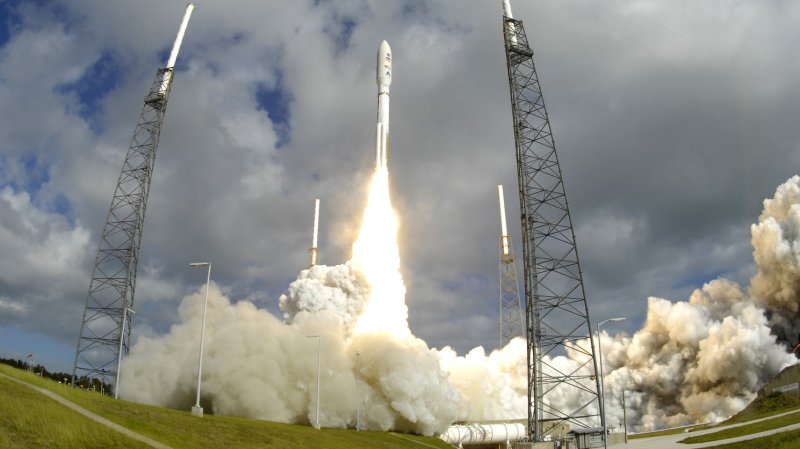1 of 2 | A United Launch Alliance Atlas V rocket launches NASA's Mars Science Laboratory at 10:02 AM from Complex 41 at the Cape Canaveral Air Force Station, Florida on November 26, 2011. The Volkswagon sized mobile lab, named "Curiosity", is planned to conduct dozens of experiments on the soils and rocks during its planned 23 month mission on Mars. UPI Photo/Joe Marino-Bill Cantrell |
License Photo
GREENBELT, Md., July 20 (UPI) -- NASA, which has put three rovers on Mars since 1996's Mars Pathfinder, says it intends the Aug. 6 landing of its Curiosity rover to be the most precise yet.
The 7-minute descent of Curiosity, the heaviest rover ever, will involve a 12,000-mph plunge through the Martian atmosphere creating temperatures on its heat shield of 3,800 degrees, and end with a rocket-powered "sky crane" lowering the 1-ton rover inside Gale Crater on Mars.
"Is it crazy? Well, not so much, once you understand it," NASA's Mars program chief Doug McCuistion said. "Is it risky? Landing on Mars is always risky."
Looking for unprecedented accuracy, the National Aeronautics and Space Administration is aiming for a landing target of roughly 4 miles by 12 miles, Florida Today reported.
The accurate landing is intended to put the rover within close driving distance of Mount Sharp at the center of Gale Crater, said Pete Theisinger of NASA's Jet Propulsion Laboratory in Pasadena, Calif., which manages the mission.
Assuming a successful landing, the rover will have more than a week to check out its instruments before beginning its first drive, with the ultimate goal of the mission to ascend the 3.4-mile high Mount Sharp in a search for signs of past habitability on Mars.
That will take one martian year, about 689 days on Earth, Theisinger said.
"The science mission is going to proceed relatively slowly," he said.















